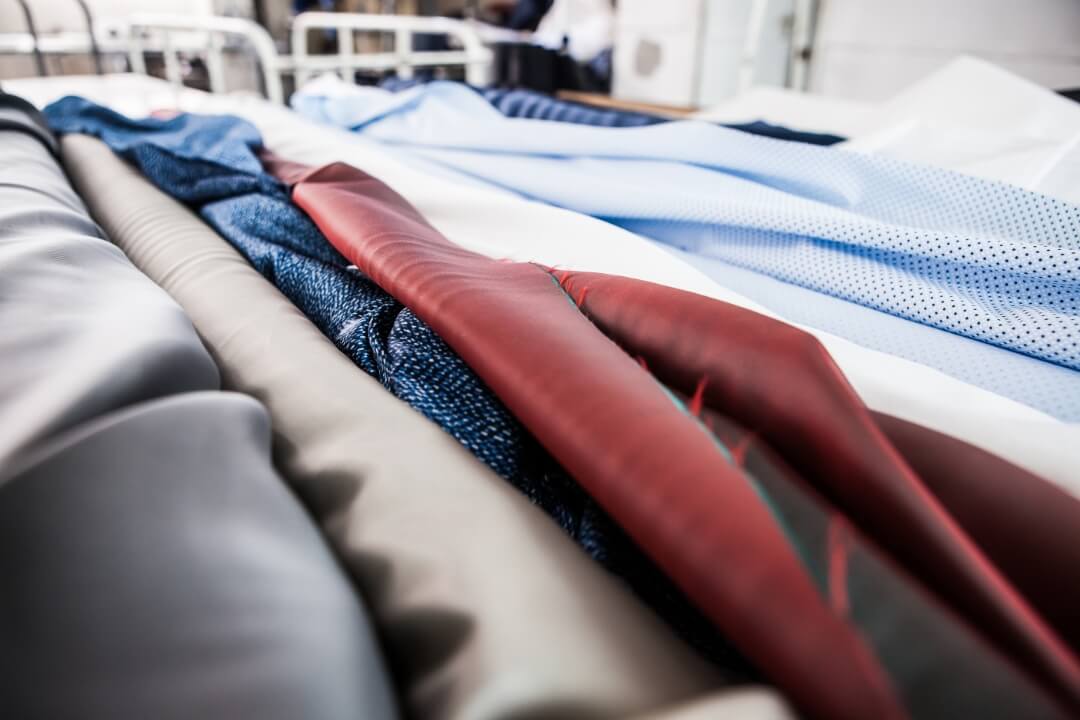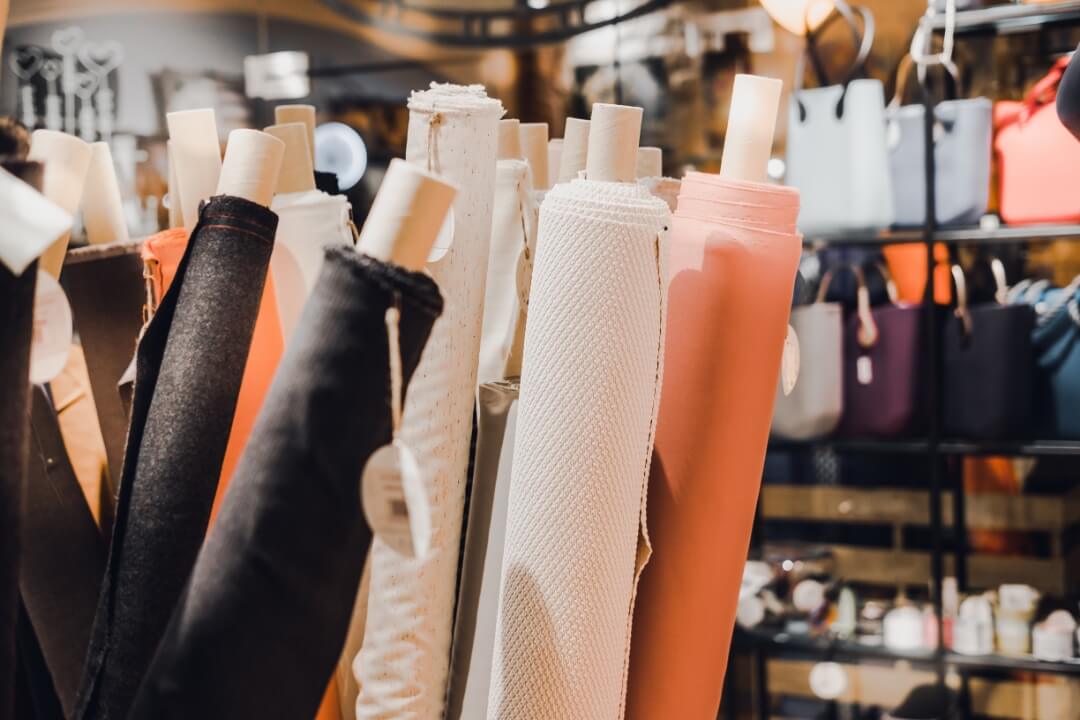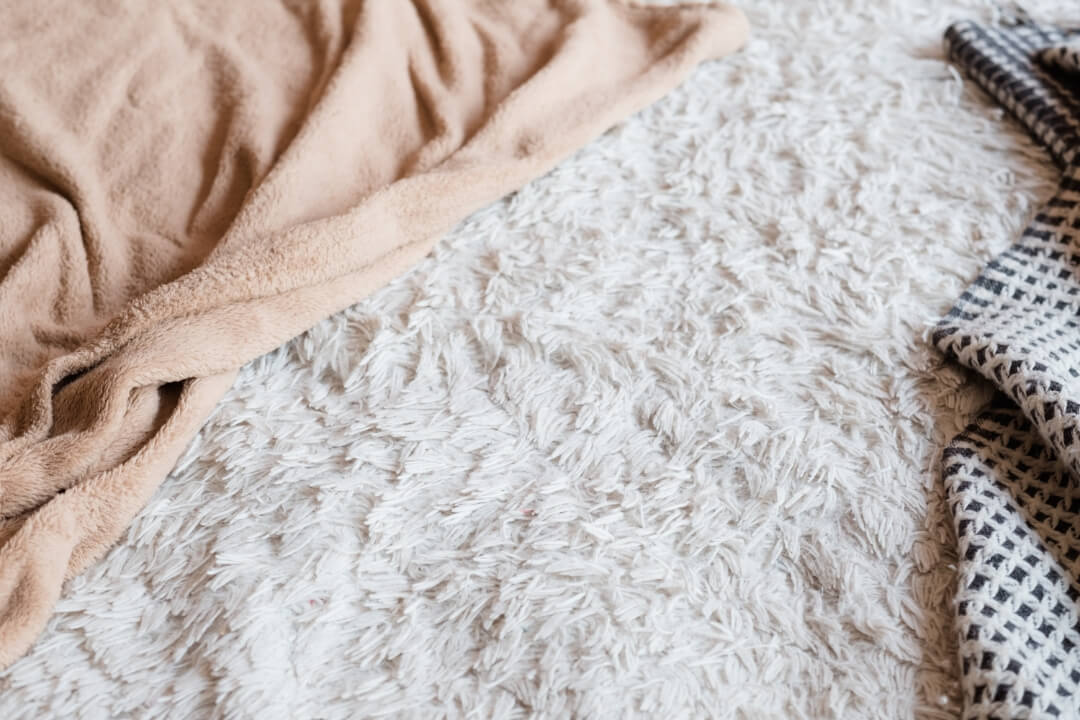
The Ultimate Guide On 10 Most Popular & Best Fabric for Jackets, Uncover The Pros And Cons Of Each Type!
Imagine you're strolling on a cool, breezy day, going through different shops in search of the ideal jacket. As you encounter a dazzling selection of colors, designs, and patterns, have you ever been curious about what's beneath – the material behind each beautiful piece? Picking a suitable fabric for your jacket is very important not just for comfort and appearance but also for the overall durability and quality of the clothing item. This all-in-one guide aims to bring clarity on the various types of best fabric for jackets and the advantages they provide. Whether you're a fashion enthusiast or someone merely hunting for the perfect options for your jacket material, this guide will lead you through the realm of jacket fabrics, helping you make a well‐informed decision.

When it comes to jacket fabrics, there are three essential types of textiles:
Woven: Woven materials are made by crossing two sets of threads at a right angle. This dense weave results in strong, long-lasting, and usually less stretchy fabrics.
Knit: In contrast, knitted materials are formed by interlocking loops of thread for a flexible, comfortable texture. These textiles are typically found in sweaters, cardigans, and relaxed jackets.
Nonwoven: Lastly, nonwoven textiles are produced by joining, pressing, or melding fibers, eliminating the need for threads. These fabrics can be durable, lightweight, and versatile for various uses, such as providing insulation and water resistance in jackets.
When you're browsing the myriad of jackets available on the market, there are aspects worth considering before selecting the best fabric for jackets. These include:
Cotton, wool, and linen are natural fabrics that offer good breathability and natural insulation. On the other hand, synthetic materials, like polyester, nylon, and acrylic, are known for outstanding durability and water resistance. Knowing the differences between these options will assist you in selecting the best fabric for your unique needs.
It's important for your jacket to resist wear and tear, so it stays in good shape and maintains its quality. Outdoor or heavy-duty fabrics, like Gore-Tex and leather, tend to be more durable compared to lightweight materials like silk or linen.
Picking a fabric that keeps you warm without causing overheating is crucial for winter jackets. Down, wool, and fleece are popular choices for excellent warmth, while lighter fabrics like cotton and linen are ideal for milder temperatures.
The comfort of a jacket largely depends on the breathability, softness, and flexibility of the fabric. Natural fibers usually focus on comfort and breathability, while synthetic fabrics offer excellent moisture-wicking properties and ease of movement.

Properties of cotton:
Cotton, a natural fiber, is recognized for its breathability, non-allergenic features, and temperature control ability. It feels soft and provides comfort all day long.
Benefits and drawbacks of cotton jackets:
Cotton jackets offer versatility and adaptability to different weather conditions. Light in weight, these jackets can be styled both casually or formally. On the downside, pure cotton is not very water-resistant. Improper care may lead to loss of shape.
Examples Of Cotton jackets:
Cotton jackets come in a range of styles, including trench coats, denim jackets, and casual bombers.
Properties of wool:
Wool is a fantastic insulator that can soak up moisture while keeping its ability to provide warmth. It has natural stretch, is resistant to fire, and can fight off mildew.
Benefits and drawbacks of wool jackets:
Wool jackets offer great warmth and insulation, making them ideal for winter and chilly conditions.
However, they might be heavy and can lead to itching if you have sensitive skin.
Although usually pricey, purchasing a wool jacket is a smart choice due to its durability.
Examples of wool jackets:
Some popular styles include pea coats, duffle coats, wool blazers, and long overcoats.
Properties of linen:
Linen is a light and airy material, perfect for hot weather. It's well-loved for its ability to absorb moisture and withstand wear and tear.
Benefits and drawbacks of linen jackets:
Linen jackets are great for a laid-back yet fashionable look, especially during summer. They promote air flow, keeping you cool and cozy. However, linen tends to wrinkle easily and might not keep you warm in colder seasons, so they're best for warmer months.
Examples of linen jackets:
Linen jackets are available in various styles, such as blazers, casual jacket options, and safari jackets.
Properties of silk:
Silk is an elegant, lightweight natural material celebrated for its soft feel, superb moisture absorption, and shiny appearance. This amazing fiber is capable of adjusting temperature, keeping you warm in cool conditions and cool when it's hot.
Benefits and drawbacks of silk jackets:
Silk jackets are perfect for sophisticated events or gatherings where style is essential. This fabric lets air flow, providing exceptional comfort. However, silk lacks the durability found in other materials and may need additional care when cleaning. Also, it may not be the best choice for those who need a jacket designed for harsh weather or heavy use.
Examples of silk jackets:
Silk jackets come in various styles, encompassing blazers, smoking jackets, bomber jackets, and kimono-style jackets.

Properties of polyester:
Polyester is an artificial material, stands out due to its durability, crease resistance, and ability to hold its shape. This fabric dries rapidly, making it an exceptional choice for water-repellent clothes.
Benefits and drawbacks of polyester jackets:
Polyester jackets are budget-friendly, highly water-resistant, and easy to maintain. They provide adequate insulation in cold weather. However, they may not be the top choice for those seeking breathability or a softer, natural touch.
Examples of polyester jackets:
Polyester can be found in a variety of jacket styles, such as parkas, raincoats, fleece jackets, and puffers.
Properties of nylon:
Nylon is a potent synthetic material, boasts impressive durability, water resistance, and exceptional flexibility. Additionally, it dries rapidly, making it suitable for various scenarios.
Benefits and drawbacks of nylon jackets:
Nylon jackets provide excellent strength and defend against water, ideal for outdoor pursuits and inclement weather. These jackets require minimal upkeep and are exceptionally lightweight. Nylon may not offer the same breathability as natural alternatives, and can have a slightly plastic-like feel. Combining it with other materials, though, can enhance breathability while retaining its durability.
Examples of nylon jackets:
Nylon jackets include sports jackets, raincoats, windbreakers, and anoraks.
Properties of acrylic:
Acrylic is also a man-made material that is lightweight, insulating, and has a soft, warm feeling like natural wool. It also stands up well to fading, mold, and mildew, making it great for all kinds of weather.
Benefits and drawbacks of acrylic jackets:
Acrylic jackets are a cost-effective option compared to wool because they offer similar warmth and coziness. These jackets maintain their shape, size, and appearance easily, which means they require little care. However, there are some downsides, such as their tendency to form small balls of fiber (pilling) after a while and being less breathable than options made from natural fibers.
Examples of acrylic jackets:
Acrylic is often found in knitted sweaters, cardigans, and jackets or as a blend with other materials to improve warmth and softness.
Properties of Gore-Tex:
Gore-Tex is an advanced synthetic material designed to be waterproof, windproof, and breathable. Its tiny pores allow moisture to escape while keeping water out, making it a favorite option for sportswear and outdoor items.
Benefits and drawbacks of Gore-Tex jackets:
Gore-Tex jackets offer superb shielding from harsh weather and are commonly used for activities like hiking, skiing, and snowboarding. These jackets are known to last long and provide consistent performance, although they may come with a higher price tag. However, for casual, day-to-day wear, a Gore-Tex jacket might not be the ideal choice due to its technical features. Additionally, some users may find it less breathable during less strenuous activities compared to alternative materials.

Properties of fleece:
Fleece is a cozy, warm material made from synthetic polyester fibers. It's popular for its great insulation, breathability, and ability to wick away moisture. Depending on the intended use and thickness, fleece can be either lightweight or heavyweight.
Benefits and drawbacks of fleece jackets:
Fleece jackets are excellent at keeping you warm without being too heavy, making them perfect for layering or wearing on their own. These jackets are versatile, budget-friendly, and available in various styles and colors. On the downside, fleece is not as water-resistant as some other materials, so it might not be the best choice for heavy rain or damp situations. If you want to learn more about fleece jacket click here.
Examples of fleece jackets:
Fleece jackets come in diverse styles, including full-zip jackets, pullovers, and vest options. They are often used as mid-layers for outdoor activities and casual day-to-day wear.
Properties of leather:
Leather is a natural material obtained from animal hides, primarily from cattle, renowned for its exceptional strength, longevity, and unique style. With age, its texture and look tend to enhance, resulting in an elegant patina effect.
Benefits and drawbacks of leather jackets:
Leather jackets offer a classic, stylish appearance along with excellent protection against damage. These jackets are naturally resistant to wind and provide a fair amount of insulation. On the contrary, they can be expensive, need particular attention when cleaning, and may not be as breathable as other materials.
Examples of leather jackets:
Iconic styles include the biker jacket, bomber jacket, and aviator jacket, as well as trench coats and suede variations.
Properties of down:
Down refers to the delicate inner feathers fetched from geese and ducks, often used as a natural insulator. Its remarkable warmth-to-weight ratio makes it a popular choice for winter clothing.
Benefits and drawbacks of down jackets:
own jackets offer fantastic insulation while being lightweight, which makes them perfect for cold-weather activities and daily use. However, wet down can lose its insulating properties and might need unique care for cleaning. Furthermore, ethical concerns regarding down harvesting lead some individuals to choose alternative synthetic insulation.
Examples of down jackets:
Down jackets come in various styles, such as puffer jackets, parkas, and quilted jackets, and often feature a combination of down with other fabrics like nylon and polyester for enhanced durability and water resistance.
The top 5 ways to ensure proper care for various jacket fabrics include:
Always check the garment's care label and follow the instructions to ensure a longer-lasting jacket. Handle with care: For delicate fabrics like silk or wool, hand wash or utilize the delicate cycle setting on your washing machine to prevent damage or shrinkage.
Select suitable detergents for specific fabric types – for instance, using a detergent specifically designed for wool will help preserve the material's quality.
Some fabrics, like cotton or linen, may lose shape when not dried properly. Opt for air drying or laying the garment flat on a drying rack instead of using a dryer for sensitive materials.
For materials like leather or suede, use sprays and conditioners to keep them supple and resistant to stains and scratches.
The perfect jacket fabric goes a long way in determining the feel and function of your garment. By guiding you through the advantages and intricacies of top 10 best fabric for jackets, we hope this comprehensive guide has aided in your decision-making process, leaving you confident and informed in your choice. Whether waterproof, insulating, or simply elegant, there is a size and type of jacket material suitable for all activities, budgets, and style preferences. Don't forget to care for your jacket properly, following care label instructions, to ensure you get the most out of your investment. With the vast array of options analyzed above, let your lifestyle determine your decision, and revel in the comfort and satisfaction of your new favorite jacket.
Q: What is the most durable jacket fabric?
A: Gore-Tex and leather jackets are among the most durable options, thanks to their resilience and ability to withstand wear and tear. Nylon and polyester jackets also offer excellent durability at a more budget-friendly price point.
Q: Which fabric is best for warm jackets?
A: Down, wool, and fleece are popular choices for retaining warmth. Down jackets provide exceptional insulation and are lightweight, while wool jackets offer natural warmth and insulation that can maintain heat even when damp. Fleece jackets are soft and exquisite insulators known for their breathability and moisture-wicking capabilities.
Q: How can I prevent my jacket from losing its shape?
A: Carefully follow the cleaning and drying instructions on the care label of your jacket to avoid damage or warping. Lay flat to dry if recommended, and avoid using harsh chemicals during the cleaning process. It's also essential to store your jacket correctly, using hangers designed for specific garment types and materials. Consider professional dry cleaning for delicate or high-value jackets to maintain their shape and appearance.
Q: Are synthetic fabrics always less breathable than natural options?
A: Although natural materials usually offer better breathability, each artificial material has different levels of breathability and moisture-absorption. For instance, Gore-Tex is made to ensure great breathability while still being waterproof. Many artificial materials are combined with natural fibers to reach the perfect blend of breathability, durability, and other important features.
Q: How do I know if a jacket made of a blend of fabric is suitable for my specific necessities?
A: Blended fabrics are created to combine the benefits of their component materials, catering to specific needs or preferences. Determine what qualities are important for the jacket you're seeking, such as insulation, water resistance, durability, or comfort. Assess the blended fabric's composition and performance degree to gauge whether it checks all the requirements on your list.